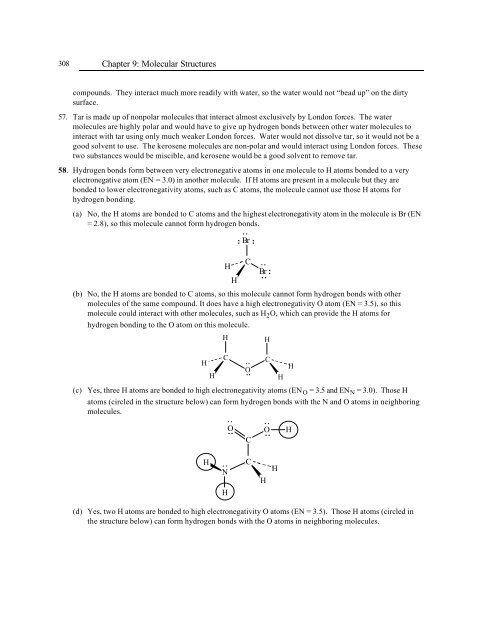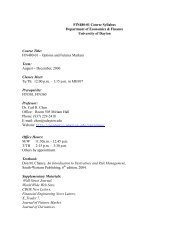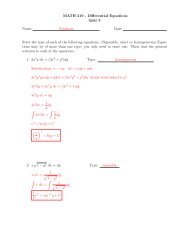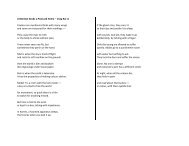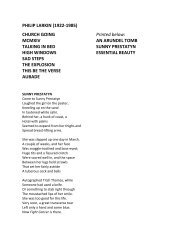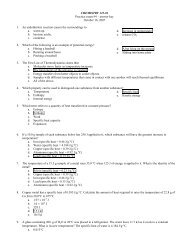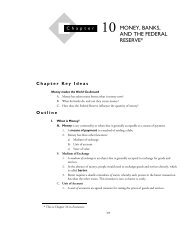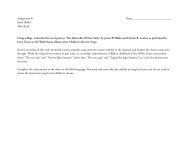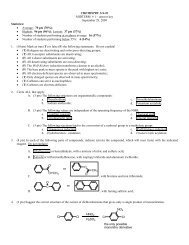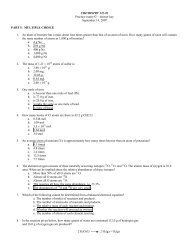Chapter 9 - University of Dayton Academic Webserver
Chapter 9 - University of Dayton Academic Webserver
Chapter 9 - University of Dayton Academic Webserver
Create successful ePaper yourself
Turn your PDF publications into a flip-book with our unique Google optimized e-Paper software.
308<br />
<strong>Chapter</strong> 9: Molecular Structures<br />
compounds. They interact much more readily with water, so the water would not “bead up” on the dirty<br />
surface.<br />
57. Tar is made up <strong>of</strong> nonpolar molecules that interact almost exclusively by London forces. The water<br />
molecules are highly polar and would have to give up hydrogen bonds between other water molecules to<br />
interact with tar using only much weaker London forces. Water would not dissolve tar, so it would not be a<br />
good solvent to use. The kerosene molecules are non-polar and would interact using London forces. These<br />
two substances would be miscible, and kerosene would be a good solvent to remove tar.<br />
58. Hydrogen bonds form between very electronegative atoms in one molecule to H atoms bonded to a very<br />
electronegative atom (EN = 3.0) in another molecule. If H atoms are present in a molecule but they are<br />
bonded to lower electronegativity atoms, such as C atoms, the molecule cannot use those H atoms for<br />
hydrogen bonding.<br />
(a) No, the H atoms are bonded to C atoms and the highest electronegativity atom in the molecule is Br (EN<br />
= 2.8), so this molecule cannot form hydrogen bonds.<br />
H<br />
H<br />
..<br />
. Br .<br />
(b) No, the H atoms are bonded to C atoms, so this molecule cannot form hydrogen bonds with other<br />
molecules <strong>of</strong> the same compound. It does have a high electronegativity O atom (EN = 3.5), so this<br />
molecule could interact with other molecules, such as H 2O, which can provide the H atoms for<br />
hydrogen bonding to the O atom on this molecule.<br />
H<br />
H<br />
H<br />
C<br />
(c) Yes, three H atoms are bonded to high electronegativity atoms (EN O = 3.5 and EN N = 3.0). Those H<br />
C<br />
..<br />
O..<br />
atoms (circled in the structure below) can form hydrogen bonds with the N and O atoms in neighboring<br />
molecules.<br />
..<br />
H<br />
..<br />
..<br />
.. .<br />
..<br />
Br<br />
H<br />
C<br />
..<br />
..<br />
O O<br />
C<br />
H C<br />
N<br />
(d) Yes, two H atoms are bonded to high electronegativity O atoms (EN = 3.5). Those H atoms (circled in<br />
the structure below) can form hydrogen bonds with the O atoms in neighboring molecules.<br />
H<br />
H<br />
H<br />
H<br />
H


